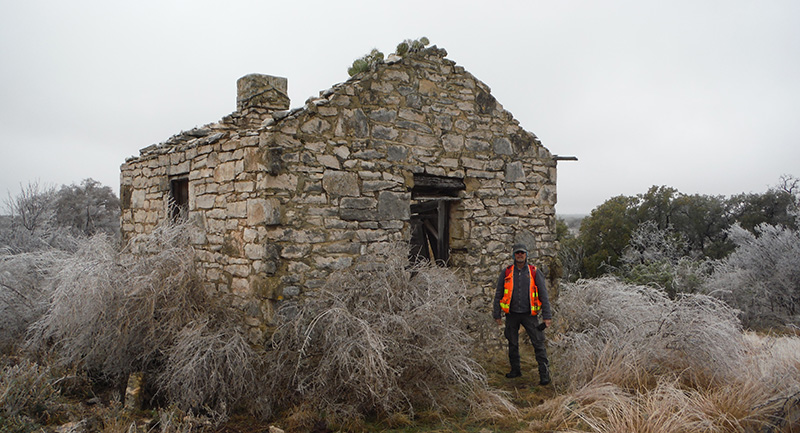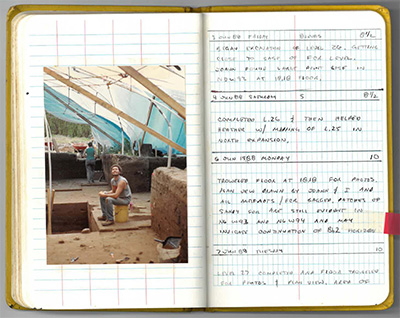Photo: Charles Neel investigates a stone house on the San Angelo Transmission Line Survey
Charles Neel, Senior Archaeologist for Raba Kistner, has been a Professional Archaeologist for 40 years, as of May, 2018. That longevity means that he has worked on many interesting projects in many areas. Charles has been with Raba Kistner since 2015; he was previously Vice President of Red River Archaeology/Dallas, before it was acquired by Raba Kistner.
When asked why he became an archaeologist, Neel explained: “I had actually wanted to become a paleontologist and had a large fossil collection by the time I was in 3rd grade. While in high school, my girlfriend showed me her uncles' arrowhead collection he had picked up while working in the oil fields of Oklahoma. I talked to him about the artifacts and he suggested a hill top near Wolf, Oklahoma. On my first trip there, I found three dart points and decided that archaeology, and the study of human artifacts, would be much more fun than just studying bones of extinct animals. That's when I decided I wanted to be an archaeologist. “
The editors asked Neel what have been the more fascinating projects in his career: “I have had so many wonderful experiences and been able to work on so may very cool archaeological sites, not only in the United States but overseas. Archaeology has really helped me see the world. It is difficult to select a single significant project, but while working out of the Guam office, I recorded the remaining concrete foundation of the World War II atomic bomb assembly building and the Bomb Pit where the Fat Man bomb was loaded onto the B-29 aircraft on Tinian Island in the Northern Mariana island chain. Somewhat later, I was sent to Yokohama, Japan to complete a survey for the Navy and recorded the office foundation of Admiral Yamamoto's headquarters building, the man that had planned the attack on Pearl Harbor. To have been able to record both these sites, where the war started, and where the war ended, seems incredible to me.”
Above: Charles Neel shared some of his notebooks from past projects in 1988.














